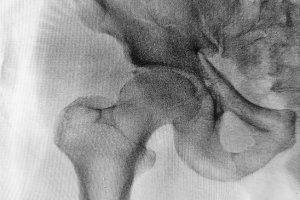Hips and hip joints are impressive structures of the body, designed for both mobility and stability. Healthy hips allow for a wide range of movement and comfortably bear our body weight. Unfortunately, we can experience injury or wear and tear that leads to hip pain.
What is Greater Trochanteric Bursitis?
Greater trochanteric bursitis can affect just about anyone, but age and lifestyle can play a role in the development of this condition. Greater trochanteric bursitis happens when the jelly-like sacs around the hip joints, called bursae, become inflamed. The hips contain two major bursae, but trochanteric bursitis only occurs due to the inflammation of the greater trochanter, which covers the bony part of the hip.
The main symptom of trochanteric bursitis is pain. At first, the pain may be sharp and intense, but then it may turn into an ache that spreads from the original point of pain across the hip. The pain will be greater when lying on the affected side, walking upstairs, or during strenuous activities.
What Causes Trochanteric Bursitis?
Anyone can develop trochanteric bursitis, although certain individuals are more at risk of developing it, such as middle-aged or older women. However, there are several reasons why someone (male or female) may develop trochanteric bursitis.
You may be wondering, what causes trochanteric bursitis?
Listed below are the main causes behind this type of hip pain:
- Muscle tears: A hip strain, which occurs when a muscle is torn or pulled beyond its limit around the hip joint, can lead to inflammation and irritation of the greater trochanter bursae
- Hip injuries: Trochanteric bursitis can occur due to injuries such as a fall, a hard bump to the hipbone, or even just laying on it for an extended period
- Activities that Overuse or Injure Joint Areas: Work or leisurely activities, such as running up the stairs, standing for long periods, bicycling and more can put stress on the joints. This can then lead to a hip injury and trochanteric bursitis
- Hip surgery complications: Previous surgeries or complications with surgeries can lead to bursitis by irritating the bursa
- Poor posture: Incorrect posture that leads to scoliosis and other conditions can eventually result in this kind of hip pain
- Certain diseases or conditions: Gout, rheumatoid arthritis, thyroid diseases, spine disease and even unusual drug reactions or infections can all lead to trochanteric bursitis. Gout and rheumatoid arthritis are types of arthritis that affect the joints, much like trochanteric bursitis
- Calcium deposits: This can irritate the bursa and lead to inflammation if this calcium deposit is situated within the tendons connected to the trochanter’s muscles
Trochanteric Bursitis Treatment
While trochanteric bursitis can be painful and inconvenient, there are plenty of effective treatments available for those who experience this hip pain. Trochanteric bursitis treatment options include:
1. Rest
Modifying activities so you relieve pressure on your hip can significantly help your hip to heal. Taking advantage of assistive devices such as crutches or canes for a week or so, will also significantly relieve the stress on your hips and quicken the healing process.
2. Ice Packs
Applying ice to the inflamed area will help to numb the affected area while also reducing swelling and inflammation. Ice packs will also help to relieve the pain and tenderness caused by bursitis.
Luckily, an ice pack or cold compress can easily be utilized in one’s own home with a few simple steps and even fewer tools. All one needs is ice, water and a sealable plastic bag. Simply fill the sealable plastic bag with ice, fill it partially with ice, squeeze the air out, seal the bag and apply it to the affected area.
3. Nonsteroidal Anti-Inflammatory Drugs (NSAIDs)
Certain medications can also help greatly with relieving an individual’s pain and decreasing inflammation. These medications include NSAIDs such as ibuprofen (Advil, Motrin), naproxen (Aleve), piroxicam, celecoxib (Celebrex) and more.
Of course, an individual should always consult their doctor first before taking any NSAIDs to avoid any adverse side effects or interactions with other medications that they may be taking.
4. Physical Therapy
Controlled exercise with a professional’s guidance can help with hip strength and flexibility. A physical therapist can recommend stretches and exercises that can help ease your symptoms. However, the exercises should be done with caution and you should be aware of your body’s limits.
5. Injections
A steroid injection can provide temporary relief from symptoms of irritation and inflammation. This treatment is done through a single injection in the bursa. You may require more than one injection, usually a few months apart. However, this option should be limited to being done only a few times to avoid damaging the bursa’s surrounding tissue.
6. Surgery
Surgery is usually the last resort option when the previous treatment options do not work. After consulting with a medical professional, you may require surgical removal of the bursa. This will not further injure the hip.
This surgery is an outpatient surgery that does not require an overnight stay since it is a non-invasive technique. It is completed through a small incision, where a small camera called an arthroscope helps to guide the surgeon in the removal of the bursa, along with other tiny instruments.
Schedule an Appointment Today
At the American Hip Institute, we specialize in orthopedic care of the hip joint with innovative treatment options.
Book an appointment with the American Hip Institute today to get an in-depth evaluation of your hip pain.




